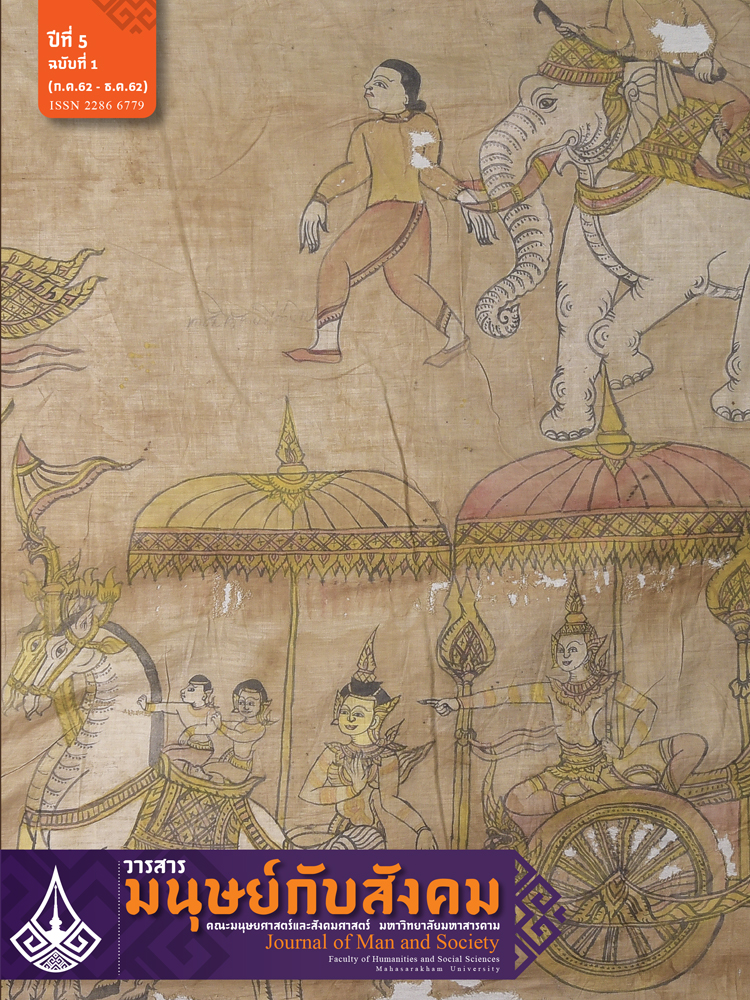Well-being Behavior of Children and Youths in Integral Steering Tasks of Children and Youths, Ubon Ratchathani Province
Main Article Content
Abstract
The research aims to study behavioral well-being practiced by the local children and youths who participated in the Integral Steering of Children and Youths at Provincial Level: Ubon Ratchathani Project. The data were collected by using questionnaires disseminated to 190 children and youths, group conversations, and interviews with their coaches, mentors, and officers of the local administrative organizations.
Results reveal that the well-being behaviors of the children and youths who participated in this project were ranked at high level by which means of each aspect of the behaviors has shown; mental well-being was ranked with the highest mean, then social, spiritual, and physical aspect of well-being, respectively. The means of all four aspects were at high level range.
The children and youths participating in this project consisted of male and female. They were different in terms of age and educational attainment; however, their general well-being behaviors were not found different. Concerning their ages, the male and female participants were not statically different in physical, mental, social, and spiritual well-being. Nevertheless, the children and youths who acquired different levels of education were different in terms of physical and social well-being with statistical significance (P =.05).
Article Details
เนื้อหาและข้อมูลที่ตีพิมพ์ลงในวารสารมนุษย์กับสังคม ถือเป็นข้อคิดเห็นและความรับผิดชอบโดยตรงของผู้เขียนซึ่งกองบรรณาธิการวารสารไม่จำเป็นต้องเห็นด้วยหรือร่วมรับผิดชอบใดๆ
บทความ ข้อมูล เนื้อหา รูปภาพ ฯลฯ ที่ได้รับการตีพิมพ์ในวารสารมนุษย์กับสังคม ถือเป็นลิขสิทธิ์ของวารสาร หากบุคคลหรือหน่วยงานใดต้องการนำทั้งหมดหรือส่วนหนึ่งส่วนใดไปเผยแพร่ต่อต้องอ้างอิงวาสาร
References
กัลยาณี สิทธิวุฒิ. (2558). การจัดกิจกรรมการเรียนรู้แบบมีส่วนร่วมและกระบวนการกลุ่มเพื่อสร้างสุขภาวะทางสังคมให้กับนักเรียนโรงเรียนบ้านน้ำโค้ง อำเภอเมืองจังหวัดน่าน. Journal of Buddhist Studies, 6(1): 30-43.
ปิยวัฒน์ เกตุวงศา และปัญญา ชูเลิศ. (2560). ประสิทธิผลของต้นแบบการลดพฤติกรรมเนือยนิ่ง และพฤติกรรมหน้าจอในวัยรุ่น. วารสารวิชาการ มหาวิทยาลัยกรุงเทพธนบุรี, 6(2) กรกฎาคม – ธันวาคม : 124-137.
สมพงษ์ จิตระดับ และสุรศักดิ์ เก้าเอี้ยน. (2556). รายงานการวิจัยฉบับสมบูรณ์ โครงการการพัฒนาสมรรถนะระบบที่ปรึกษา ให้สภาเด็กและเยาวชนในประเทศไทย. กระทรวงการพัฒนาสังคมและความมั่นคงของมนุษย์.
สุริยเดว ทรีปาตี. (2551). สุขภาวะของเด็กและเยาวชน. กุมารเวชสาร, 15(2) : 141-144.
อัญมณี บูรณกานนท์ มาดี ลิ่มสกุล และศิรินทร รัตน์ทองปาน. (2560). สถานการณ์เด็กและเยาวชน: ข้อเสนอแนะเชิงนโยบาย. [ออนไลน์] ได้จาก https://www.nicfd.cf.mahidol.ac.th/th/images/ policy/policy1.pdf. [สืบค้นเมื่อ 20 สิงหาคม 2561].
คิด แก้วคำชาติ (2561). สัมภาษณ์. 23 สิงหาคม 2561. สถาบันพัฒนาเยาวชนสืบสานภูมิปัญญา. อุบลราชธานี.
Minkkinen, J. (2013). The Structural Model of Child Well-Being. Child Indicators Research, 6(3): 547–558.
Tremblay, M.S., Colley, R.C., Saunders, T.J., Healy, G.N., and Owen, N. (2010). Physiological and health implications of a sedentary lifestyle. Appl. Physiol. Nutr. Metab, 35(6): 725–740.
การสัมภาษณ์
คิด แก้วคำชาติ (2561). (23 สิงหาคม 2561). สัมภาษณ์. สถาบันพัฒนาเยาวชนสืบสานภูมิปัญญา. อุบลราชธานี.


